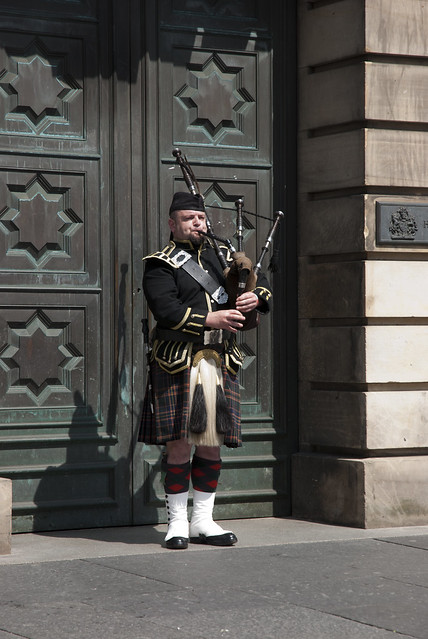Final Thoughts on the Course
I have to admit that there were times before I had my study break and afterwards that I had lost all momentum, enthusiasm and competence for the course and for any progress my skills.
When I first started I was relatively uninhibited and felt that some of the challenges would not too difficult to conquer.
Due to the sudden loss of my father, who had nurtured my first interest in photography and art I was suddenly at a loss for understanding and competence. I had to call for a study break and when I returned I worked at a much slower pace to before. I found covering the ground for the rest of the course was a struggle to maintain my pace and not allow the emotional strain to inhibit my expression.
Without the support structure I also struggled to understand concepts and had to rely heavily on reading to provide support.
The first Assignment, being portraiture, at first appeared to be a simple assignment, however I found straight away that it was a challenge to my skills as I had no concept on how to advise a model on how to move and pose. I was very unhappy with my work the first time around.
I was much happier with the Second Assignment as by then I felt quite comfortable approaching complete strangers, striking up a conversation, discussing how I wanted to photograph them and then taking the final images. When I look back through the images I still feel the comfort and happiness of the day.
Assignment 3 for me was a challenge; with my limited mobility I found it difficult to scout out lots of locations and I could not always access areas that are open to non-disabled people. With the limited surroundings I did spend long periods of time watching how people moved through building spaces and how they used them. I was struck by the quick changes in spaces where one moment they were full and then empty. This helped shape my work for the Assignment.
Again in Assignment 4 I was limited in choice of location and that frustrated me as I had to discard what I think were several good ideas as I just could not physically complete the work. I had to settle on what I now feel is a lesser subject and that due to the frustrations my heart was not quite in my work which meant that the final Assignment suffered a bit.
Without the help from outside sources I would not have been able to complete Assignment 5, having no support structure available and no group to fall back on I was lucky that I was able to call upon some of my wife’s friends who rallied round and assisted in the discussions which helped to shape my final work. I plan to revisit the text for this Assignment before final submission to clarify some of the cultural references as not everyone is au fait with the historical and cultural context.
Building supportive networks
For the most part I was a lone worker and had little or no links with other students. My only contact with other students was through the OCA forums and the Facebook pages. For the rest of the time I had to use my own initiative and bounce ideas around a lot forming argument and counter argument for my own work.
After 2 courses do I know what kind of photographer might I be becoming?
After TAOP I was upbeat and felt that my understanding of art and photography had taken a leap forward. However working through the Assignments I felt that it was coming apart for me. I am physically unable to run around scouting out buildings and locations and due to my limited circle of travel I could only work within that limiting scope. It was only when working on Assignment 5 that I felt more comfortable and that the course was coming together as it was at that point that I felt that I could use the Project to show that there was an inconsistency in the way that people perceive a location based on how it is being presented to them as living history. Here I was leaning into the space of social and cultural photography.
Areas for improvement
Obviously I need to improve and develop generally but there are some aspects that I think need particular attention.
My tutor on People and Place was generous with his suggestions for improvements and pointing me towards photographers that I should view and read.
My tutor give me several suggestions on my last three assignments, cropping images as well as suggesting other images that I could have used. What was positive was that it gave me more ideas for structuring my images and my concept of working to completed project and he also made me consider my editing skills.
Going forward I do need to develop my text and image editing skills. Writing and editing large pieces of text are difficult for me as I suffer badly from dyslexia and I have to rely on someone who has no concept of my working in art to help in making the text comprehensive and complete.
OCA:People and Place
OCA learning log for the level one course; People and Place
Sunday, 14 September 2014
Tuesday, 1 July 2014
Cultural History - Clarification
As part of Assignment 5 I used the text Chocolate and shortbread box version of Scotland without really giving a clear cultural clarification and imparting knowledge.
Essentially the Chocolate/Shortbread box version of Scotland is the highland hills and mountains covered in heather and grass usually accompanied with a loch, a highland cow, some tartan or someone playing the bagpipes.
However like many places, this version of Scottish Culture does not really exist outside of the tourist trail. Tartan itself for example was not a popular item within Scotland until Sir Walter Scott made it the must have item
Bagpipes themselves can be traced as far back as a carving on a stone Hittite slab at Eyuk. The history of the bagpipes is convoluted and complex. Some believe that the bagpipes came from the middle east
This version of Scottish Culture is not made clear within the tourist industry as it may well damage the cultural view of Scotland and its past.
Essentially the Chocolate/Shortbread box version of Scotland is the highland hills and mountains covered in heather and grass usually accompanied with a loch, a highland cow, some tartan or someone playing the bagpipes.
However like many places, this version of Scottish Culture does not really exist outside of the tourist trail. Tartan itself for example was not a popular item within Scotland until Sir Walter Scott made it the must have item
Bagpipes themselves can be traced as far back as a carving on a stone Hittite slab at Eyuk. The history of the bagpipes is convoluted and complex. Some believe that the bagpipes came from the middle east
This version of Scottish Culture is not made clear within the tourist industry as it may well damage the cultural view of Scotland and its past.
Bibliography.
Angier, R. (2015). Train Your Gaze: A Practical and Theoretical Introduction to Portrait Photography. United Kingdom: Bloomsbury Academic.
Brunelli, P. G. (2013). Ronnie James Dio A Photographic Memoir by PG Brunelli. 2nd ed. Great Britain: Rufus Stone.
Dance, R. (2012). Hollywood Unseen: Photographs from the John Kobal Foundation. United Kingdom: Antique Collectors’ Club.
Dimond, F. (2004). Developing the Picture: Queen Alexandra and the Art of Photography. United Kingdom: Royal Collection Enterprises.
Dylan, B. and Feinstein, B. (2008). Hollywood Foto-Rhetoric: The Lost Manuscript. First. United Kingdom: Simon & Schuster.
Ewing, W. A. (2007). Edward Steichen. United Kingdom: Thames & Hudson.
Finler, J. W. (2012). Hollywood Movie Stills: Art and Technique in the Golden Age of the Studios. 1st ed. United Kingdom: Titan Books.
Freeman, S. L. and J. (2009). The Illustrated Practical Guide to Digital and Classic Photography: The Expert’s Manual on Taking Great Photographs. London: Hermes House.
Herschdorfer, N. (2012). Coming in Fashion A Century of Photography at Conde Nast. First. Germany: Foundation for the Exhibition of Photography.
Jeffrey, I. and Kozloff, M. (2008). How to Read a Photograph: Understanding, Interpreting and Enjoying the Great Photographers. United Kingdom: Thames & Hudson.
Jenkinson, M. (2011). The Portrait Photography Course. United Kingdom: A & C Black Publishers.
Kirstein, L., Evans, W. and Meister, S. (2012). Walker Evans: American Photographs. 75th ed. United States: Museum of Modern Art.
Margaine, S. and Margaine, D. (2009). Forbidden Places: Exploring Our Abandoned Heritage. France: Jonglez.
Margaine, S. and Margaine, D. (2013). Forbidden Places. France: Jonglez.
Muir, R. (2010). Norman Parkinson: Portraits in Fashion. United Kingdom: Palazzo Editions.
Prakel, D. (2006). Basics Photography 01: Composition. Switzerland: AVA Publishing SA.
Scott, C. (2007). Street Photography: From Brassai to Cartier-Bresson. United Kingdom: I.B.Tauris.
Stevenson, S. and Forbes, D. (2009). A Companion Guide to Photography in the National Galleries of Scotland. United Kingdom: National Galleries of Scotland.
Strauss, D. L. and Berger, J. (2004). Between the Eyes: Essays on Photography. 1st ed. United States: Aperture.
Wilson, D. M. (2011). The Lost Photographs of Captain Scott: Unseen Photographs from the Legendary Antarctic Expedition. United States: Little Brown and Company.
Worobiec, T. and Spence, R. (2003). Photo Art. 2nd ed. Singapore: Amphoto Books.
Brunelli, P. G. (2013). Ronnie James Dio A Photographic Memoir by PG Brunelli. 2nd ed. Great Britain: Rufus Stone.
Dance, R. (2012). Hollywood Unseen: Photographs from the John Kobal Foundation. United Kingdom: Antique Collectors’ Club.
Dimond, F. (2004). Developing the Picture: Queen Alexandra and the Art of Photography. United Kingdom: Royal Collection Enterprises.
Dylan, B. and Feinstein, B. (2008). Hollywood Foto-Rhetoric: The Lost Manuscript. First. United Kingdom: Simon & Schuster.
Ewing, W. A. (2007). Edward Steichen. United Kingdom: Thames & Hudson.
Finler, J. W. (2012). Hollywood Movie Stills: Art and Technique in the Golden Age of the Studios. 1st ed. United Kingdom: Titan Books.
Freeman, S. L. and J. (2009). The Illustrated Practical Guide to Digital and Classic Photography: The Expert’s Manual on Taking Great Photographs. London: Hermes House.
Herschdorfer, N. (2012). Coming in Fashion A Century of Photography at Conde Nast. First. Germany: Foundation for the Exhibition of Photography.
Jeffrey, I. and Kozloff, M. (2008). How to Read a Photograph: Understanding, Interpreting and Enjoying the Great Photographers. United Kingdom: Thames & Hudson.
Jenkinson, M. (2011). The Portrait Photography Course. United Kingdom: A & C Black Publishers.
Kirstein, L., Evans, W. and Meister, S. (2012). Walker Evans: American Photographs. 75th ed. United States: Museum of Modern Art.
Margaine, S. and Margaine, D. (2009). Forbidden Places: Exploring Our Abandoned Heritage. France: Jonglez.
Margaine, S. and Margaine, D. (2013). Forbidden Places. France: Jonglez.
Muir, R. (2010). Norman Parkinson: Portraits in Fashion. United Kingdom: Palazzo Editions.
Prakel, D. (2006). Basics Photography 01: Composition. Switzerland: AVA Publishing SA.
Scott, C. (2007). Street Photography: From Brassai to Cartier-Bresson. United Kingdom: I.B.Tauris.
Stevenson, S. and Forbes, D. (2009). A Companion Guide to Photography in the National Galleries of Scotland. United Kingdom: National Galleries of Scotland.
Strauss, D. L. and Berger, J. (2004). Between the Eyes: Essays on Photography. 1st ed. United States: Aperture.
Wilson, D. M. (2011). The Lost Photographs of Captain Scott: Unseen Photographs from the Legendary Antarctic Expedition. United States: Little Brown and Company.
Worobiec, T. and Spence, R. (2003). Photo Art. 2nd ed. Singapore: Amphoto Books.
Thursday, 26 June 2014
Dennis Hopper Exhibition at the Royal Academy
The Royal Academy in London are currently showing the Dennis Hopper "The Lost Album" exhibition
Details are here https://www.royalacademy.org.uk/exhibition/22?gclid=CNiLkIO5mb8CFSjpwgodmlcAzQ
It looks like an exciting collection of images, hopefully it will tour the country and I hope that I will get a chance to see it. I found Dennis Hopper to be a fascinating photographer and this collection of photos of both fellow actors and artists as well as social life in the ever changes times of the 60s and 70s.
I feel that he has a unique perspective on the times and these photos act almost as a visual diary of his experiences.
Details are here https://www.royalacademy.org.uk/exhibition/22?gclid=CNiLkIO5mb8CFSjpwgodmlcAzQ
It looks like an exciting collection of images, hopefully it will tour the country and I hope that I will get a chance to see it. I found Dennis Hopper to be a fascinating photographer and this collection of photos of both fellow actors and artists as well as social life in the ever changes times of the 60s and 70s.
I feel that he has a unique perspective on the times and these photos act almost as a visual diary of his experiences.
Tuesday, 17 June 2014
Commonwealth Baton
I noticed a number of signs on the main roads detailing the parking restrictions for the day of the Commonwealth baton relay.
Since it was passing the end of the street I popped along to have a quick look and see if I could get a couple of shots of the relay as it passed.
The first runner past was an official with the Glasgow 2014 mascot, getting people into the mood by cheering as she past.
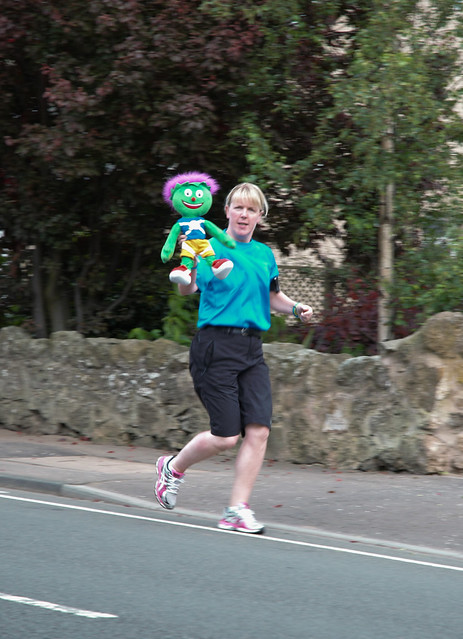
She certainly looked like she was enjoying the run as it was a pleasant enough day, and the relay was short.
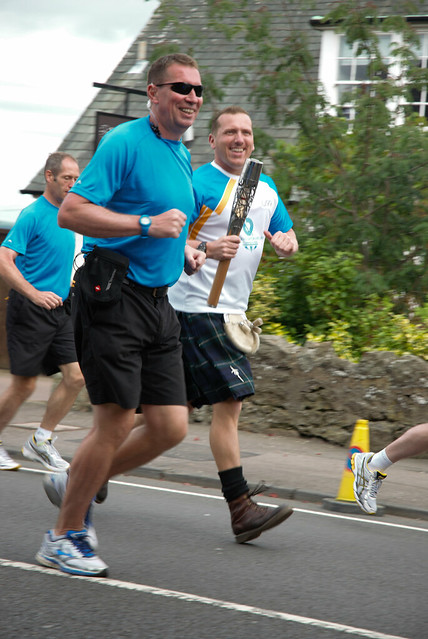
This gent was the first actual runner for this section coming into Haddington as he jogged past he was surrounded by police runners and motorbikes. He got a good response from the crowd as he ran.
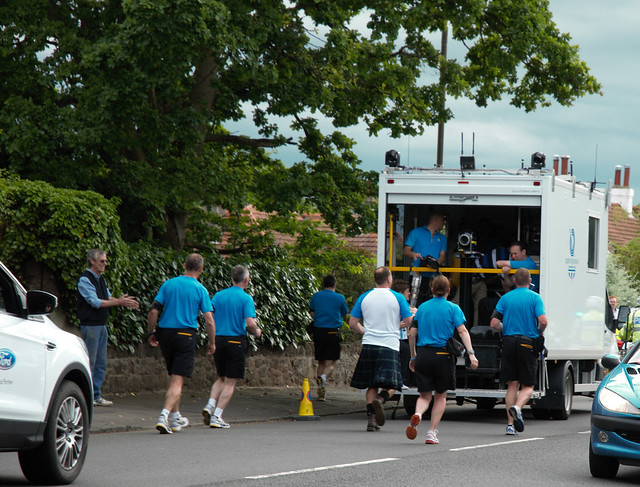
As the van in front past I noticed that it was full of photographers and technical equipment allowing them to broadcast the relay as it happened. There was quite a lot of kit in that van!.
Since it was passing the end of the street I popped along to have a quick look and see if I could get a couple of shots of the relay as it passed.
The first runner past was an official with the Glasgow 2014 mascot, getting people into the mood by cheering as she past.
Baton runner 1
Nikon D80, Aperture Priority Mode, Aperture f5.6, Speed 1/90, 70mm, ISO 125, Daylight White Balance, 18-70mm lens.
She certainly looked like she was enjoying the run as it was a pleasant enough day, and the relay was short.
Baton runner 2
Nikon D80, Aperture Priority Mode, Aperture f5.6, Speed 1/125, 70mm, ISO 125, Daylight White Balance, 18-70mm lens
This gent was the first actual runner for this section coming into Haddington as he jogged past he was surrounded by police runners and motorbikes. He got a good response from the crowd as he ran.
Baton and BBC Van
Nikon D80, Aperture Priority Mode, Aperture f5.6, Speed 1/125, 70mm, ISO 125, Daylight White Balance, 18-70mm lens
As the van in front past I noticed that it was full of photographers and technical equipment allowing them to broadcast the relay as it happened. There was quite a lot of kit in that van!.
Assignment 5 - People and Place on Assignment.
The first thing to decide was what type of client I was going to work for, as this would help define the final images of the Assignment. After some consideration I decided that the client would be a “National Geographic” type magazine. After that I had to decide on a subject for the photo shoot. With a couple of friends, my wife and I role played ideas and bounced subjects and thoughts backwards and forwards with me refining ideas which started to look like they might meet the brief of the subject matter.
I then mulled the ideas around for a couple of days, before returning to the subject of the brief. I went looking for templates, samples and picture briefs so that I could get a structured idea of what a real brief would look like and what would be asked for in the brief; as this would help define the images and ideas that I would shoot.
Again I sat down with friends and we went through the brief with them acting as the magazine and myself as the photographer so that we could firm up ideas and requirements. I had an independent person on the sidelines who was able to guide the brief in the right direction so that we did not judge and set to low or too high a set of objectives.
I referenced a number of websites for guidance on creating a proper brief, these sites included
- · Tilia Services http://www.tiliaservices.co.uk/brief.html
- · DIY Photography http://www.diyphotography.net/photo-licensing-look-basics/
- · Tick Boxer http://www.tickboxer.com/content/tickboxer-faq.htm
- · Smart Insights http://www.smartinsights.com/digital-marketing-strategy/creative-brief-template/
- · Pinterest http://www.pinterest.com/pin/33565959694773242/
- · About.Com http://advertising.about.com/od/tipoftheweek/ht/How-To-Write-A-Creative-Brief.htm
I sat and looked over my notes and decided to try and apply
these notes to a template brief that I had. The template brief I used was from Box
ticker and after a few hours I did find that I was starting to get bogged down
in the template questions themselves. After about 2 days of trying to answer
the questions based on my notes and the ideas that I had in my head I felt that
it was too complicated to complete single handedly. I then went with a template
brief for just image guidance as a brief. The brief was shaped by a web template
by Talia Services (http://www.tiliaservices.co.uk/brief.html)
This was much simpler and guided me towards what I was to capture, as I felt that I was not trying to create a fully detailed article rather just some guidance for myself which would help me capture the images.
I have attached a copy of the completed typed brief so that I can show how the ideas were formed before I decided where and when to photograph.
I did encounter one major speedbump on the way and that was that all my printers in the house stopped working for one reason or another, and I realised that I was completing most of my detailed document editing on paper which I find a lot easier than on computer.
Using the main part of the brief, the idea was for the final article and images to show and focus on the subject of the loss of industrial heritage and history in a small town so close to the capital which thrives on a different style of history. I wanted to show the difference between the chocolate and shortbread box history of the area and the reality of the area where the inconvenient industrial history which is considered “dirty” is not being preserved for the future.
The first thing to do was to scout out some areas that I considered worthwhile investigating and to took a couple of test shots which I published in my learning log to show that I was proceeding with ideas and to show the basic structure of my brief.
I returned to the site I had chosen often to photograph again and again in different lighting conditions to get the images that I wanted. I did not want a complete set of dark dank photos of rotting metal and wood, I wanted to show the “museum” as it is called in the full light of day and reveal what is happening to it and to the surrounding locations.
After the initial investigation and shoots I then refined a few ideas and returned to see if I could continue to shoots ideas in a contiguous method where I could bring the strands together into a final article.
Once I had a large number of images, I started to refine them down by comparison of each image to check not only if it met with the brief but would be suitable for publication within an article. As I built the ideas together I used a latin Loreum document filled with text so that I could adjust the position of each image in relation to both the text and to each other.
Cover
Nikon D80, Exposure Mode Manual, focal length 18mm (35mm
equivalent 27mm), aperture f22, speed 1/4 second, ISO 100, Daylight white
balance, Centre Weight metering, Tripod Mounted Camera, 18-70mm lens
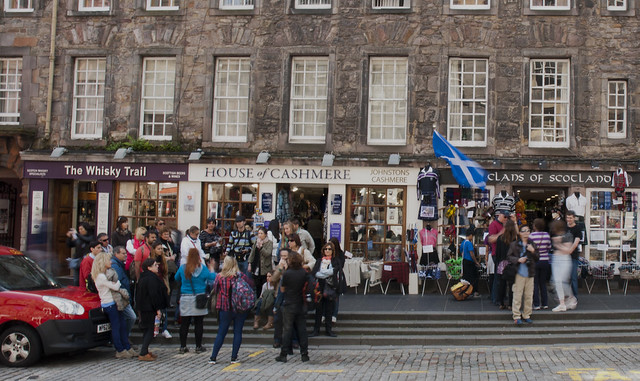
In trying to capture the contrast between what I saw at the
museum and what I saw on the street I wanted to show the ever present tartan
shortcake box faux image of the area and provide evidence that visitors are
being guided and presented with a distorted image and history.
I thought that this was an ideal cover image as it presented the group of individuals and a guide standing in front of a row of Tourist shops while the guide was giving a short presentation. I was happy to see that a couple of the people were so engrossed in the tale that they were unaware of their surroundings and were sitting on the van bonnet and standing in the street where traffic passes.
From historical images I discovered that this particular area was in fact originally housing and entranceway for the apartments above.
Abandoned Lighthouse /DSC_0010
Nikon D80, Aperture Mode Manual, focal length 50mm (35mm
equivalent 37mm), aperture f13, speed 1/125 second, ISO 250, Daylight white
balance, Matrix metering, Hand Held Camera, 50mm prime lens,

I wanted to capture this lighthouse as it is situated right
at the far end of what was originally a dockland wall but is now recovered land
used for modern luxury building. The lighthouse has been left to rot and
vandalised even though it sits only a few hundred feet from a major tourist
attraction and shopping centre.
Left to Vandals/ DSC_0018
Nikon D80, Aperture Mode Manual, focal length 11mm (35mm equivalent 16mm), aperture f13, speed 1/125 second, ISO 250, Daylight white balance, Matrix metering, Hand Held Camera, 11-16mm lens,
I had to balance on what was left of a seawall and platform to get to this section of the lighthouse. I could only shoot through the fence, so I composed the frame to show the dirt and debris remaining and that the building has just been left to vandals.
Coal
Wagon Left to rot/DSC_0096
Nikon D80, Exposure Mode Auto, focal length 29mm (35mm equivalent
43mm), aperture f4.8, speed 1/60 second, ISO 400, Shade white balance, Matrix
metering, Hand Held Camera, 18-70mm lens,
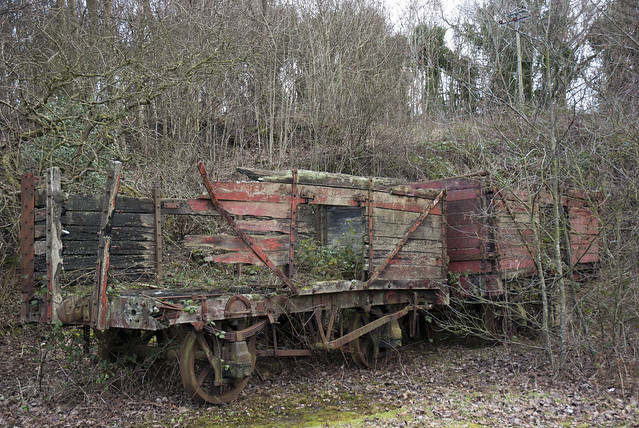
Here I started to wander around the museum and found that
items had been abandoned to the elements. An old coal wagon which would have
been used to transport coal up and down the coast has been pushed into the
embankment and left. It lies a stone’s throw from the museum but has been
allowed to sit and become overgrown with bushes and plantlife has started to
grow on the rotting wood itself.
When this image was shown to a local historian and archaeologist he was both surprised and disgusted that a museum would allow exhibits to rot and that the technology and style of this wagon was being lost forever.
Places still to hide/ DSC_0110
Nikon D80, Aperture Mode Manual, focal length 18mm (35mm equivalent 27mm), aperture f4, speed 1/125 second, ISO 400, Shade white balance, Matrix metering, Hand Held Camera, 18-70mm lens,
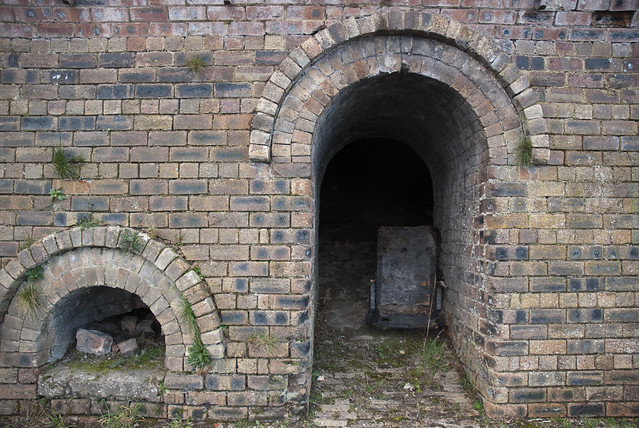
Sited beside the museum is the brickworks, fenced off from
the rest of the land. People still come and climb the fence and hideout and do
whatever they feel like. This burnt chair caught my eye as I walked past. It
was obvious that it had not been there long and that someone had still used it
for shelter. I liked the colours of the wooden parts of the chair as they
mirrored to colour of the bricks surrounding it.
Waterlogged Brickworks/ DSC_0127
Nikon D80, Aperture Mode
Manual, focal length 18mm (35mm equivalent 27mm), aperture f4, speed 1/350
second, ISO 400, Shade white balance, Matrix metering, Hand Held Camera,
18-70mm lens

For this image, I had to shoot over the fence holding the
camera above my head. I was standing at the end of the line of the brickworks,
behind me would have been a wooden , steel and brick ramp leading down to the
mixing ponds and the final stacking area. You can clearly see the design of the
brickworks as it leans back into itself to guide the heat and smoke back
towards the chimney. Now nothing runs down the tracks but rain.
Beam Engine/ DSC_0147
Nikon D80, Aperture Mode
Manual, focal length 18mm (35mm equivalent 27mm), aperture f4, speed 1/350
second, ISO 400, Shade white balance, Matrix metering, Hand Held Camera,
18-70mm lens
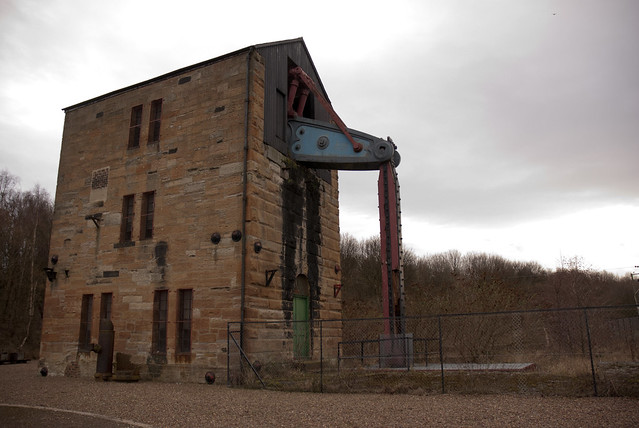
Standing
high above everything else is the beam engine which was used to pump water and
clay up from the mines and out into the brickworks. It was originally slated
for complete restoration and repair and was going to be one of the few beam
engines still running. However that idea, like the engine, has been abandoned
and now stands unused and unnoticed as the landscape. I wanted to capture the
size of the building and the fact that it now stands silent rusting slowly.
Train Crane/ DSC_0157
Nikon D80, Aperture Mode
Manual, focal length 50mm (35mm equivalent 75mm), aperture f4.5, speed 1/1000
second, ISO 400, Shade white balance, Matrix metering, Hand Held Camera,
18-70mm lens
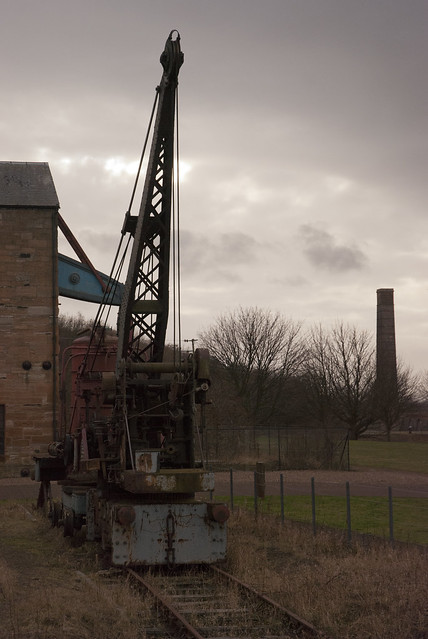
This crane was being used by the enthusiasts when they first started the idea of the museum to repair and rebuild the steam locomotives which were sat around the site. These locomotives are no longer here and the only sign that they existed is now this train crane. It sits on rusting rails no longer being considered for repair or conservation. Like the locomotives one day it will be no more than a piece of metal sitting amongst the rubble.
Rusting Rails/ DSC_0160

Once these lines were used for the transport of the coal and bricks out of the yard and up to the main train line where they would be transported up to Edinburgh and beyond. When the steam trains were still being run once a month, these lines were used to run the trains back and forth for the pleasure of the locals and for train enthusiasts further afield. Now they end in a wire fence and the rails are broken and loose.
Airshaft Cap/ DSC_0041
Nikon D80, Aperture Mode
Manual, focal length 11mm (35mm equivalent 16mm), aperture f4, speed 1/750
second, ISO 100, Daylight white balance, Matrix metering, Hand Held Camera,
11-16mm lens
This is the top of an airshaft, which was sunk to provide
air to the lower part of the mines and for access to the top of the shaft for
maintenance. Like the rest of the area it sits unattended and is vandalised on
a semi regular basis.
After shooting the images for the museum I wanted to capture some contrasting images, the types of images that the shortbread box version of the area which is well advertised and subscribed to by the tourist board.
I had to wait a few weeks to complete these images as between spells of terrible weather I had to endure a change is medication and a bout of bursitis in my right shoulder left me unable even to left a camera.
Finally I was able to go to the one location that I wanted which was the top of the Royal Mile in Edinburgh, where the original view of the castle is now blocked by the advertising boards for the Edinburgh Tattoo. My concept was to photograph a local street artist who dresses akin to the Hollywood version of William Wallace, but his usual location was taken by someone else and he was unavailable to photograph.
I moved down the street and photographed my second choice which is a row of shops selling the usual collection of tartan everything.
I also photographed shop workers dressing in kilts as they passed on their way to work.
Tourist Board
Nikon D80, Aperture Mode Manual, focal length 65mm (35mm
equivalent 97mm), aperture f11, speed 1/180 second, ISO 1000, Daylight white
balance, Centre Weight metering, Hand Held Camera, 18-70mm lens,
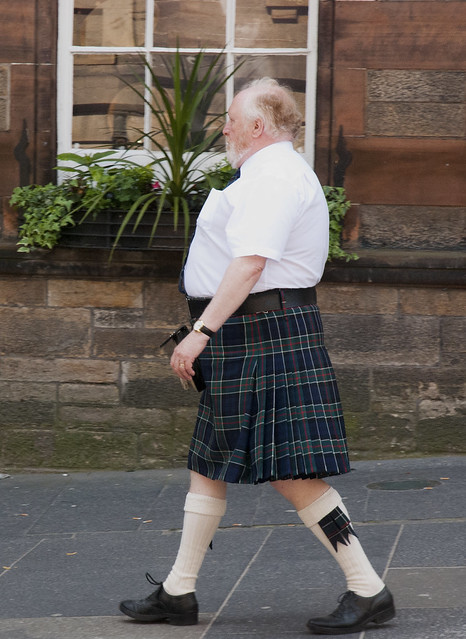
I
wanted to capture the kilt and sporran image of the tourist board workers; they
wear a specially designed tartan which was created in 2003 for the Visit
Scotland organisation.
I really wanted to capture the complete contrast in the two locations, one where the history has been lost and discarded and the other being perpetuated and enforced.
Piper
Nikon D80, Exposure Mode Manual, focal length 70mm (35mm
equivalent 105mm), aperture f8, speed 1/125 second, ISO 1000, Daylight white
balance, Centre Weight metering, Hand Held Camera, 18-70mm lens,
As always, there is the ever present piper in full military regalia somewhere posing and piping for the passersby. Here the piper stands with his back to a large bronze door where he could continue to play while people came and stood beside him to be photographed.
I went
into this assignment with the hope that I would gather some surprise images and
feel that the images I captured would present a hopeful view that these
locations could be saved. , However as I set out to write up the assignment I
feel a sort of loss that these places are being abandoned and that people no
longer care for them and that they are nothing more than places to vandalise or
walk their dogs.
Have I
completed what I set out to do? Yes I feel that I have fulfilled the brief, I
have taken images which have already produced feelings and statements from
several viewers.
What
have I learned throughout this course; People photography is a lot
harder than I thought.
My self confidence really needs to be built up, at the
moment having only started, my confidence and self security in photographing in
this style is a lot lower, but in saying that I have only started and the
experience from this course has helped shape my thoughts and ideas.
I am still struggling in focusing my emotional depth, at
times I miss a good shot as I have not fully considered the emotions and
thoughts behind the image.
Saturday, 14 June 2014
Sensor Dust
Due to a small section of the house having to be refurbished I have not had regular power or internet access and I was unable to check some of my assignment images until long after I had taken them.
Imagine my horror when I discovered that some of the images were completely ruined by sensor dust. Large unfocused blobs and spots could be clearly seen in some of the images and where they they had caught the light looked like lens flares.
Having not cleaned the sensor on the D80 for a while I found that some of the spots were difficult to remove. Following the guidance on the web, I purchased a lupe with the light that I could sit on the camera body and this would allow me to see, analyse and guide me on where I had to clean the sensor.
Having used some new sensor cleaning tools I was nervous to see if the sensor was clean and the images less spotted.
On first review I was horrified to see that there were some smears and spots which looked worse than before. After a second clean with the tools, and air duster and using a small vacuum pump to draw air away from the body I was pleased to see that the sensor was at least cleaner.
Rose Macro
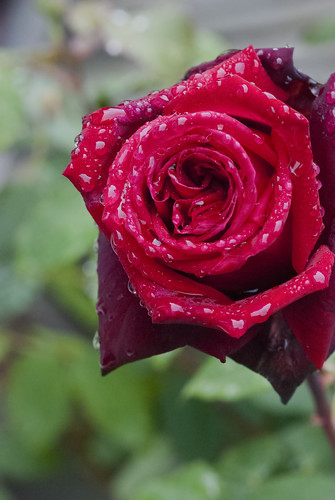
Imagine my horror when I discovered that some of the images were completely ruined by sensor dust. Large unfocused blobs and spots could be clearly seen in some of the images and where they they had caught the light looked like lens flares.
Having not cleaned the sensor on the D80 for a while I found that some of the spots were difficult to remove. Following the guidance on the web, I purchased a lupe with the light that I could sit on the camera body and this would allow me to see, analyse and guide me on where I had to clean the sensor.
Having used some new sensor cleaning tools I was nervous to see if the sensor was clean and the images less spotted.
On first review I was horrified to see that there were some smears and spots which looked worse than before. After a second clean with the tools, and air duster and using a small vacuum pump to draw air away from the body I was pleased to see that the sensor was at least cleaner.
Rose Macro
Nikon D80, Aperture Mode Manual, focal length 105mm (35mm
equivalent 157mm), aperture f8, speed 1/500 second, ISO 3200, Daylight white
balance, Matrix metering, Hand Held Camera, 105mm macro lens,

Subscribe to:
Posts (Atom)


